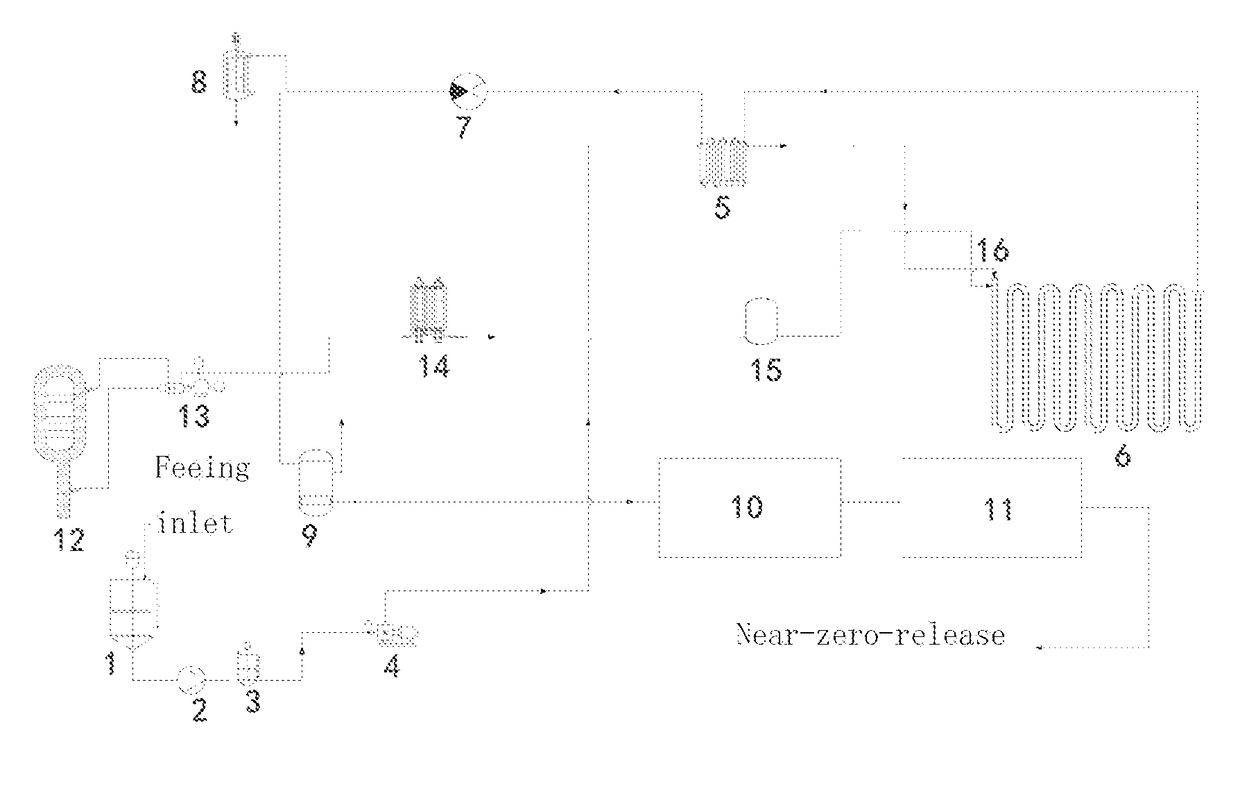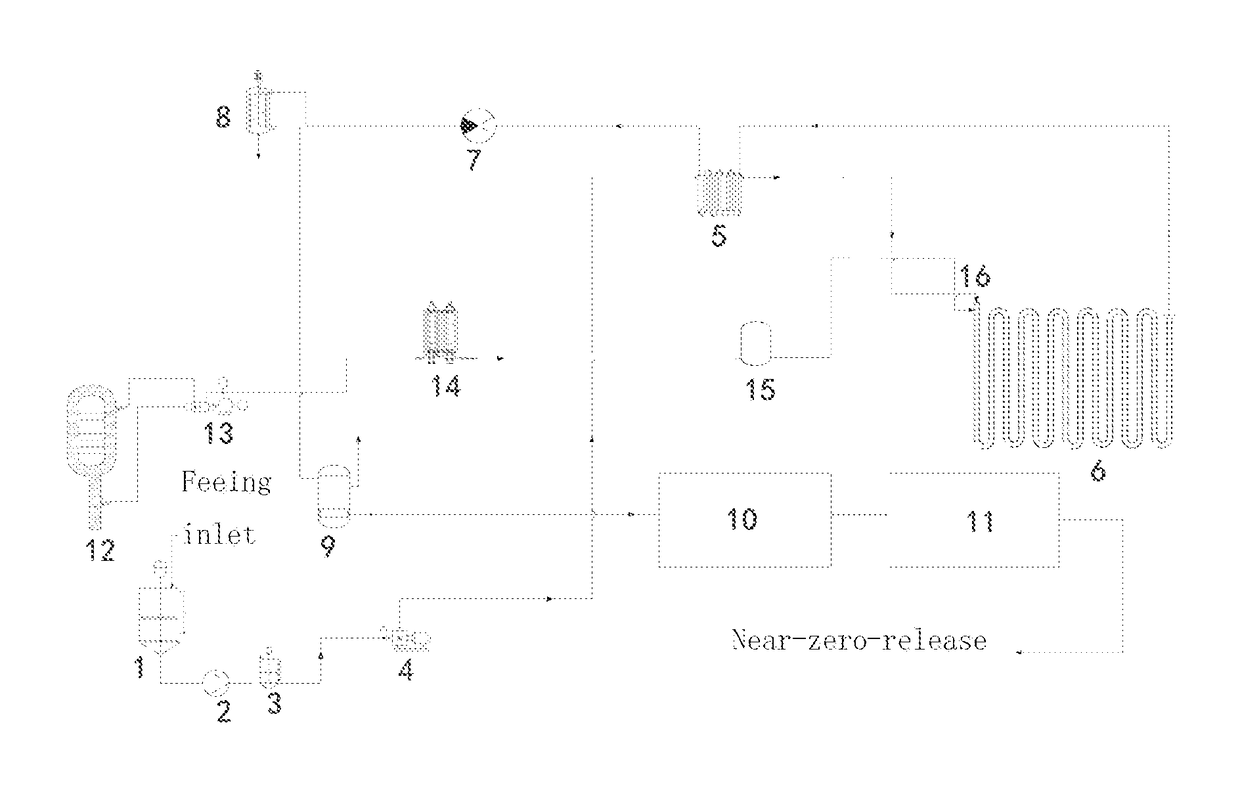Near-zero-release treatment system and method for high concentrated organic wasterwater
a treatment system and high-concentration technology, applied in the field of chemical engineering and environment protection, can solve the problems of overheating tube burst, clogging, and high cost, and achieve the effect of effective material recovery and solving corrosion and salt deposition problems
- Summary
- Abstract
- Description
- Claims
- Application Information
AI Technical Summary
Benefits of technology
Problems solved by technology
Method used
Image
Examples
Embodiment Construction
[0038]Referring to FIG. 1 of the drawings, according to a preferred embodiment of the present invention is illustrated. The embodiment is an explanation not a limitation of the present invention, wherein
[0039]a near-zero-release process system for high concentrated organic wastewater, comprising: a wastewater transport unit, a reaction unit, an oxygen supplying unit and a reprocessing unit, wherein
[0040]the wastewater transport unit comprises a sludge tank 1, a sludge buffer tank 3, a homogeneous emulsification pump 2 is on a pipe between the sludge tank 1 and the sludge buffer tank 3; the reaction unit comprises a heat exchanger 5 and a tubular reactor 6; a high-pressure variable-frequency plunger pump 4 is on a pipe between the sludge buffer tank 3 and the heat exchanger 5; a outlet of a pipe side of the heat exchanger 5 is connected to an inlet of the tubular reactor 6; an outlet of the tubular reactor 6 is connected to an inlet of a shell side of the heat exchanger 5; the oxygen...
PUM
| Property | Measurement | Unit |
|---|---|---|
| pressure | aaaaa | aaaaa |
| temperature | aaaaa | aaaaa |
| pressure | aaaaa | aaaaa |
Abstract
Description
Claims
Application Information
 Login to View More
Login to View More - R&D
- Intellectual Property
- Life Sciences
- Materials
- Tech Scout
- Unparalleled Data Quality
- Higher Quality Content
- 60% Fewer Hallucinations
Browse by: Latest US Patents, China's latest patents, Technical Efficacy Thesaurus, Application Domain, Technology Topic, Popular Technical Reports.
© 2025 PatSnap. All rights reserved.Legal|Privacy policy|Modern Slavery Act Transparency Statement|Sitemap|About US| Contact US: help@patsnap.com


